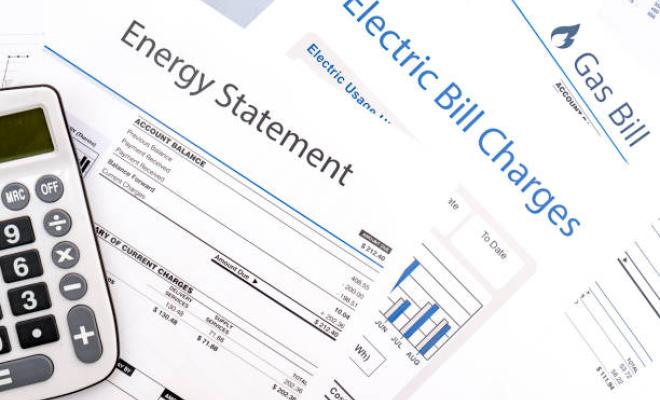20 Mar 2023
Context of our analysis
The energy crisis has pushed many people into fuel poverty. Fuel poverty is a social justice issue that Friends of the Earth has a long track record of campaigning on. As an environmental justice organisation, we want to ensure everyone lives in well-insulated, warm homes powered by clean renewable energy.
Friends of the Earth has carried out an up-to-date data analysis to identify the number of households in England and Wales that’ll be in fuel poverty in 2023. We’ve also identified some demographic trends among those experiencing fuel poverty, and where there are fuel poverty hotspots.
Our analysis is up to date because it includes:
- The government’s decision to extend the Energy Price Guarantee at £2,500 for Q2 (April, May and June) in 2023.
- The latest energy prices for Q3/4 as predicted by Cornwall Insights.
- The additional financial support announced in the Autumn Statement, which was a £900 cost-of-living payment for those receiving means-tested benefit payments, an additional £300 for pensioners, and an additional £150 for those receiving disability payments. Pensions and benefits will also increase by 10.1% from April 2023.
- The government’s energy bill rebates from Q1 2023, which were worth £200 per household.
See more detail on the methodology of our analysis at the end of this briefing.
What’s fuel poverty?
There are different ways of defining fuel poverty. One that’s commonly used is a household needing to spend more than 10% of its disposable income on fuel. This disposable income is also needed for housing costs, food, clothes etc, so spending more than 10% of it on energy can push households into poverty. This is the metric we’ve used for our analysis.
The UK government uses a different definition. Its metric requires households to have both low incomes and low energy efficiency before they can be considered as living in fuel poverty. In our view, this artificially lowers the number of homes reported as being in fuel poverty. Using this metric, the government was able to claim that in England there were only 100,000 additional households in fuel poverty in 2022 compared with 2021 despite the energy crisis (an increase from 3.16 million to 3.26 million).
Key findings on fuel poverty
- Even with gas prices falling and additional financial support from the government for those receiving benefit payments, there’ll still be at least 5 million households (1 in 5) in fuel poverty in England and Wales in 2023. This is a conservative estimate because our analysis is based on actual energy consumption data as opposed to an estimate of the energy needed to keep a household warm1.
- There’ll be more than 1 million households in extreme fuel poverty, spending more than 20% of their disposable income on energy. 742,200 households will be spending between 20-30% of their income on energy costs, 196,500 between 30-40%, and 117,400 more than 40%.
- Two-thirds of those in fuel poverty aren’t receiving means-tested benefit payments and so won’t receive the government support offered to those who are.
- Not surprisingly, there’s a strong relationship between income and fuel poverty. Average disposable income in the UK in 2021-22 was £32,300 (£14,500 for the poorest 20%). The average income of the 1.1 million households that’ll need to spend more than 20% of their income on fuel in 2023 is estimated to be £14,005, which includes the additional financial support from government. In other words, these households are predominately the poorest 20% in UK society. The average income of those that’ll need to spend 10-20% of their income on energy is £20,584, still only two-thirds of the average income. In other words, those in fuel poverty are predominately those on two-thirds or less of the average income.
- Those in fuel poverty have higher fuel bills than those not in fuel poverty, with above average fuel bills. Some of this will be related to need (eg age or disability) and fuel use (eg higher use of oil or liquified petroleum gas is correlated to fuel poverty), but it’s also likely to be strongly related to energy efficiency (although the data used for this study didn’t include this metric).
- Those in fuel poverty are much more likely to have pre-payment meters. Those spending over 20% of their income on energy are almost 4 times more likely to have one than those not in fuel poverty (33.4% vs 8%). While pre-payment meters allow you to not build up a debt, they also mean if you haven’t got money at a particular time you can’t heat your home and are in effect disconnected, whereas those on direct debits can spread costs throughout the year.
- Our data suggests old age is also strongly correlated with fuel poverty. 42% of households spending more than 10% of their income on energy have a householder over 65, compared with 25% of households not in fuel poverty.
- There’s a strong correlation between disability and fuel poverty. 21% of households in fuel poverty have somebody in receipt of disability payments, compared with just 11% of households not in fuel poverty. There’s no correlation between ethnicity and fuel poverty in our data analysis – approximately 10% of households that are and aren’t in fuel poverty have a person of colour.
See the tables below for housing and demographic data by expenditure on energy.
Fuel poverty hotspots
In addition to the data analysis described above, we’ve also carried out an analysis to identify geographical concentrations of fuel poverty by drawing on 2 of the findings – that people in fuel poverty have only two-thirds or less of the national average income, and that their fuel bills are above average.
Using these criteria, we’ve identified 3,231 fuel poverty hotspots (neighbourhoods – defined as Lower Layer Super Output Areas (LSOAs) – that on average meet both criteria). See our map of these hotspots and our spreadsheet with the full data.
Of course, there are likely to be people in fuel poverty in most, if not all, of the 34,753 neighbourhoods in England and Wales, but our analysis identifies where there are concentrations of households in fuel poverty.
The local authority areas with the most fuel poverty hotspots are Birmingham, Bradford and Sandwell (see Table 2 for the top 10 local authorities, and this spreadsheet for all local authority areas). There are 6 local authorities where more than 40% of neighbourhoods are fuel poverty hotspots: Sandwell, Birmingham, Wolverhampton, Walsall, Blaenau Gwent and Bradford.
See Table 3 for the number of fuel poverty hotspots in each region. The West Midlands has both the highest number and proportion of fuel poverty hotspots.
The proportion of well-insulated properties across these fuel poverty hotspots is only a third (34.8%). Around a fifth of homes lack basic insulation such as adequate loft insulation or cavity wall insulation. This illustrates the need for a rapid, street-by-street programme of free basic insulation in these neighbourhoods, followed up by deeper retrofit programmes so that all homes are well-insulated (to Energy Performance Certificate C standard) within the next decade.
Fuel poverty tables and pen portraits
Fuel poverty figures and hotspots
Table 1 – fuel poverty numbers
Table 2 – top 10 local authorities for fuel poverty hotspots
Table 3 – number of fuel poverty hotspots by region
Fuel poverty pen portraits
This information is based on the Energy Price Guarantee being extended at £2,500 for Q2 and the prediction that energy costs will decrease in Q3/4.
Regarding housing costs, across England and Wales the average social housing rent is £5,512, the average private rent is £8,632 and the average mortgage is £9,100. Regarding age and average age, the "head of household" is identified by the households themselves.
Table 4 – households spending greater than 40% of their disposable income on energy
Table 5 – households spending 30%-40% of their disposable income on energy
Table 6 – households spending 20%-30% of their disposable income on energy
Table 7 – households spending 10%-20% of their disposable income on energy
Table 8 – households spending 5%-10% of their disposable income on energy
Table 9 – households spending less 5% of their disposable income on energy
Research methodology
The analysis is based on the Office for National Statistics (ONS) Living Costs and Food Survey (LCF). We combined 4 years of survey data between 2016/17 and 2019/20 (the most recently available data at the time of this analysis). The resultant data set contained 21,359 household cases, weighted to represent all households across the UK.
Data regarding annual expenditure on different fuels was used to estimate household energy consumption for electricity, mains gas and unmetered fuels (oil, liquified petroleum gas, coal and wood) using fuel prices corresponding to each year of survey data. For electricity and mains gas, we used government fuel price statistics covering the period 2016 to 2019. For unmetered fuels, Sutherland Tables data for 2022 was linked to the Retail Price Index (RPI) fuel and light index to estimate unmetered fuel prices between 2016 and 2019.
Imputation modelling was used for a small number of household cases with missing data, for example where cases in the data had missing electricity expenditure values (all households were assumed to consume electricity), or where a household was specified as having a mains gas heating system but had no corresponding mains gas consumption value.
Finally, all energy consumption values in the data set were calibrated to 2022 energy consumption levels for each domestic fuel, so that the total consumption of domestic fuels in the data set aligned with national statistics on domestic fuel consumption for that year.
Using these energy consumption levels, and assuming that 2022 fuel consumption levels remain the same over the next 12 months2, we then applied the following fuel price scenario to calculate different energy bills for each household in 2023:
Quarterly energy bill projections for 2023 from Cornwall Insights, assuming an extension of the Energy Price Guarantee support to June (ie capping average fuel bills at £2,500), and including a £200 energy rebate applied to electricity bills in Q1. In 2023 the average energy bill is forecast to be around £2,130.
We also included the government’s cost-of-living support and its recent announcement to increase benefit payments by 10.1% in line with inflation. As part of this process, we identified all households that were in receipt of means-tested benefit payments3, disability payments and pensioner households, awarded £900, £150 and £300 respectively to these households (some households were eligible for 2 or more of these payments), and increased the benefit income by 10.1%. The total numbers of people receiving benefit payments in the survey were lower than government numbers cited, suggesting that benefit recipient information is under-reported in the survey. Some attempt was therefore made to correct this (for example, by identifying very low-income pensioner households and assuming that these households were receiving Pension Credit).
These uprated incomes and energy bill estimates for 2023 were used to calculate the proportion of household income spent on energy4. In our analysis of fuel poverty, we used before housing costs (BHC) net household income.
Using this ratio, we then identified households in fuel poverty – those with energy bills greater than 10% of their net income. To explore fuel poverty in more depth, we also identified households in extreme fuel poverty, banding households with energy-cost-to-income ratios of 10-15%, 15-20%, 20-30%, 30-40% and >40%. Households in each of these bands were profiled using energy, income, demographic and housing data to create a set of fuel poverty pen portraits.
Data sources
Retail Price Index (RPI) for fuel and light (ONS).
Cornwall Insight’s final forecast for the April price cap.
All data sources are licenced under the Open Government Licence 3.
- 1Earlier this year, the government estimated that 8.8 million households in England would be in fuel poverty in 2023 – this was calculated using the 10% disposable income metric but after taking off housing costs. However, its analysis didn’t take into account the extension of the £2,500 Energy Price Guarantee nor the decreases in energy costs forecasted for Q3/4 2023. It also used a modelling approach that overestimated the amount of energy needed by homes, and therefore overestimated expenditure. It modelled the energy needed for 21°C in the home’s main room and 18°C in other rooms for 9 hours per day on weekdays and 16 hours per day on weekends (or 16 hours every day for those not out at work, which overestimates the level and therefore energy needed by most households (although vulnerable households are likely to need this level of warmth). Our modelling approach is based on actual energy consumption in a normal year. Our figure is conservative because some people will underheat their homes, and our figures are “before housing costs”, not “after housing costs”. Actual levels of fuel poverty are therefore likely to be slightly higher than our figure of 5.1 million for England and Wales but well below the government’s figure of 8.8 million for England, so perhaps in the region of 6-7 million households in England and Wales.
- 2It was beyond the scope and realms of the research to predict behavioural response to higher energy prices, such as underheating and disconnection. However, in reality many people will have made the difficult decision to use less energy and live in uncomfortably cold homes during winter.
- 3Universal Credit, Income-based Jobseeker’s Allowance, Income-related Employment and Support Allowance, Income Support, Pension Credit, Working Tax Credit and Child Tax Credit.
- 4In some nations of the UK, this is comparable to how fuel poverty is calculated, whereby households are said to be in fuel poverty if they spend more than 10% of their income on energy. However, there are nuances and variations on how fuel bills are calculated and which incomes are accounted for.





